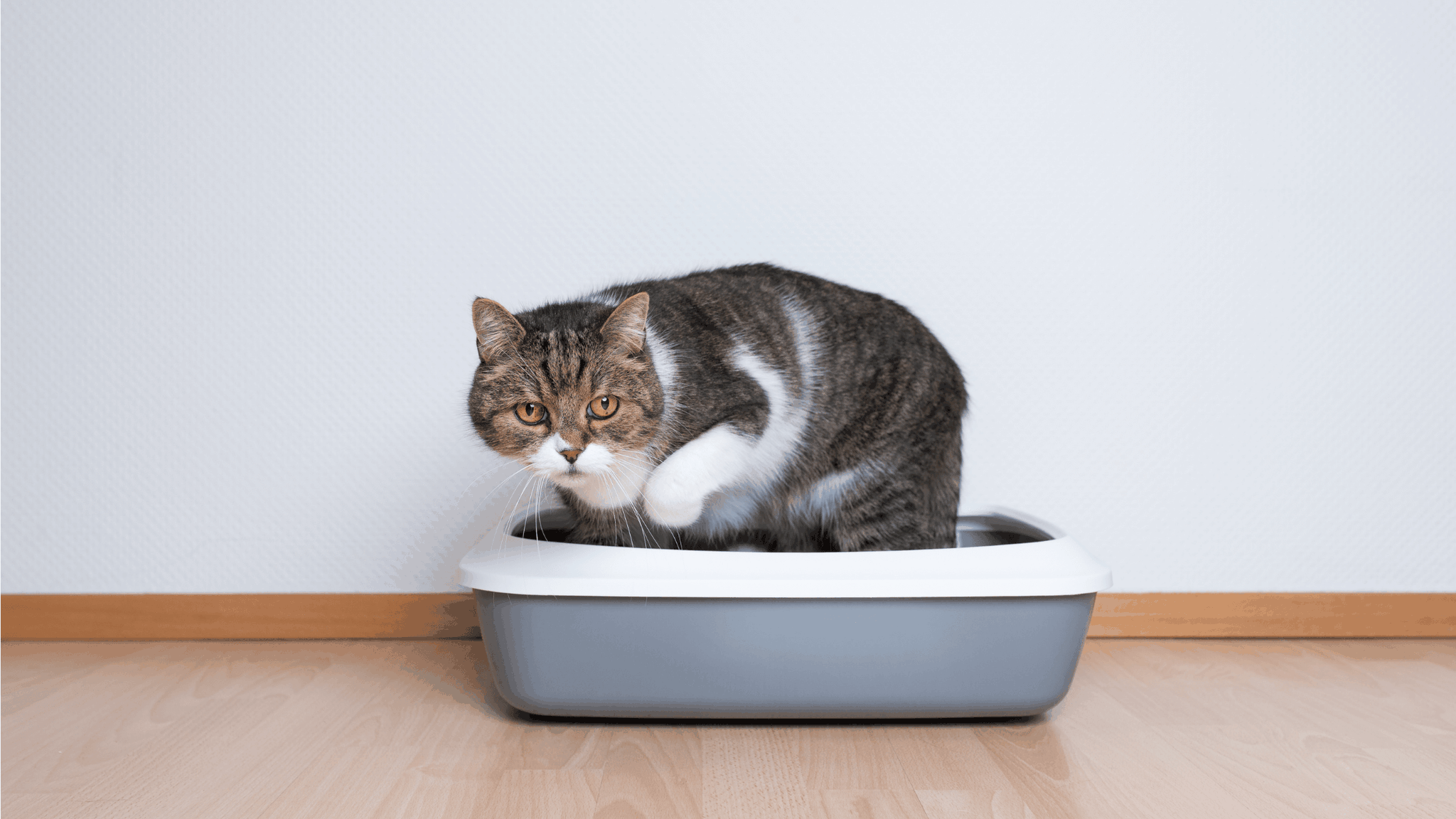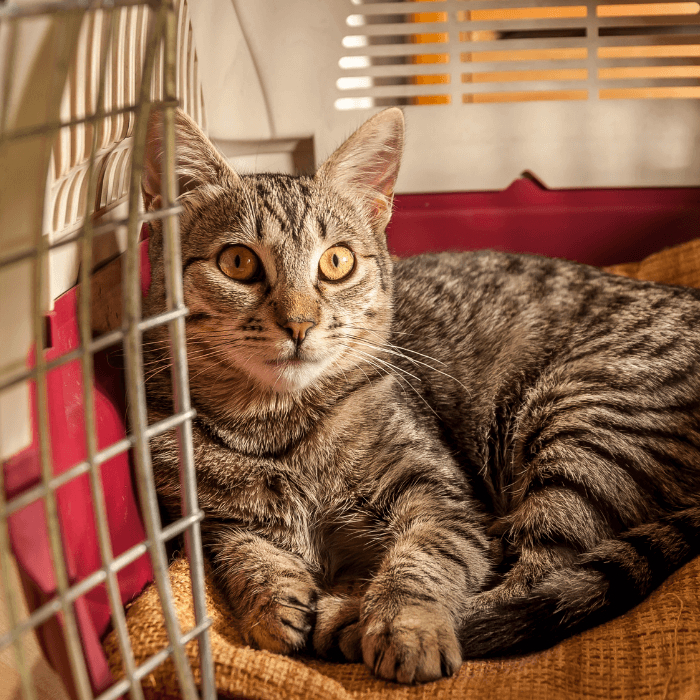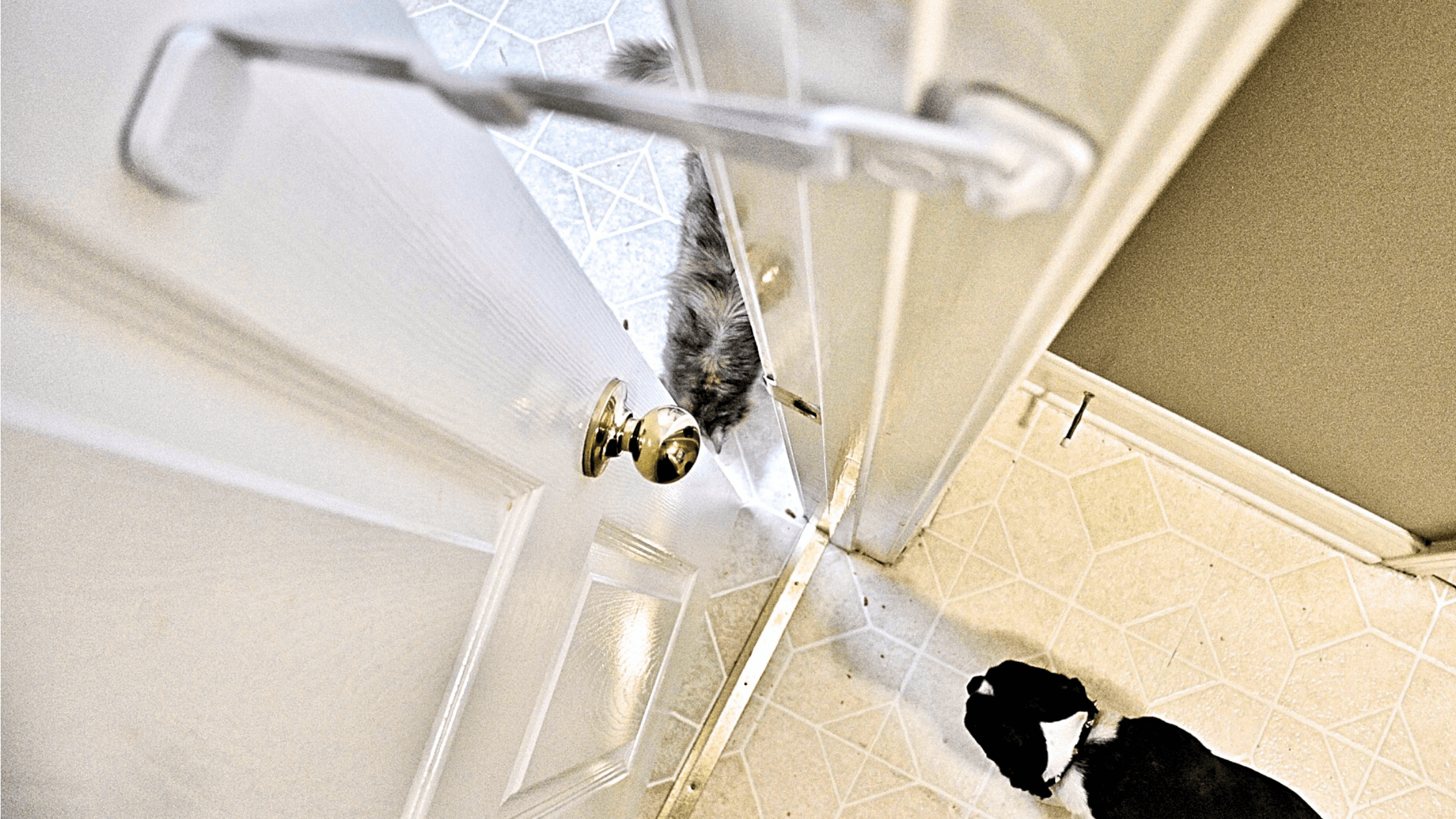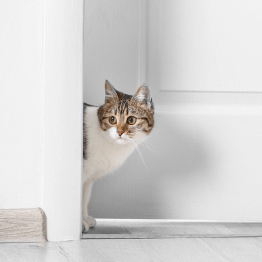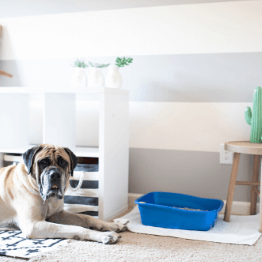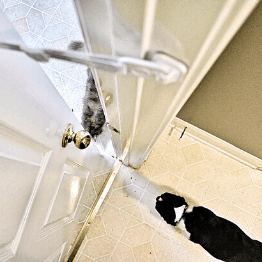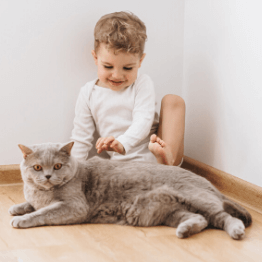HOW TO LITTER TRAIN A CAT
Bringing home a new kitten? Or perhaps you’re taking the plunge and trying to litter train a stray cat? Either way, teaching them to use the litter box is essential for a clean kitty and a clean home!
The pawblem comes in when you’re trying to navigate how to litter train a cat. Looking for tips for litter box training a kitten should be a must before you expand your furmily.
Here’s the good news: cats are naturally clean creatures. So teaching them about their new toilet habits should be purrr-ty straightforward. However, if you want to avoid any kitten litter training problems, keep on reading! Here are a few of our best tips.
WHEN SHOULD I START LITTER TRAINING MY KITTENS?
Can we start by saying that we are officially jealous if you’re bringing home a new kitten! Those fluffy cuddles and playful paws are simply dreamy.
Now onto the serious stuff. Granted that you shouldn’t separate a cat from its mother before 8 weeks old, you can start litter training as soon as they’re home. Cats can start their litter box training as soon as 3 weeks old.
Depending on where you’ve got your cat from, your cat may come home fully trained - lucky you! If not, you should encourage your cat to use their new toilet from the get-go. Just remember, if you have a dog at home, you have to dog proof the litter box first! No one wants to find litter treasures around the house, especially your cat.
AVOIDING ANY KITTEN LITTER TRAINING PROBLEMS
Mistakes happen; it’s purrrfectly natural. As your cat gets settled into its new toilet routine, you can expect a few oopsie daisies here and there. However, knowing how to litter train a cat the right way will prevent any kitten litter training problems.
Here are our best tips for litter box training a kitten or older cat:
1. Choose the Right Litter Box
First thing’s first, you have to pick out a litter box that would be right for you and your cat.
There are various types of litter boxes; there are big ones and small ones. There are also automatic cleaning boxes that rake the dirty litter in a storage bag - fancy, huh?
Some people use the disposable litter boxes that come with the litter already inside so you don’t have to mess with the litter.
Our biggest tip is just to avoid the covered litter boxes. The main reason why is that closed litter boxes can make your cat feel trapped and cause anxiety.
If your cat associates the litter box with stress, you will see more kitten litter training problems pop up.
2. Find the Right Cat Litter
Finding a suitable cat litter is something you can do easily. There are a lot of different types of cat litter; there are scented litters and non-scented litters.
There is also litter that will clump up after your cat does their deed making it easier to scoop up. You should change your cat’s litter box at least every other day to keep your house smelling fresh and clean.
If you’re opting for a scented litter, please research the possibility of UTIs and other cat-related health issues. It may smell lovely, but it may have a paw-ful effect on our kittens.
3. Consider Your Cat’s Diet
Ever heard of the saying, “what goes in must come out”? Well, you’re pretty much dealing with a clear goes-in-comes-out situation here.
What you choose to feed your cat will have a direct impact on its toilet time. If your cat has a sensitive stomach, this is particularly im-paw-tant.
Although Disney has us thinking that milk and cats make a purrrfect pair, it’s the opposite. As much as this is a treat for our cats, it will leave a big mess in the litter box.
Then there are the treats. Figure out what your cat likes to nibble on the most and keep those handy as you start to reward your cat for using their litter box.
4. Plan Out Your Cat’s Schedule
Having an idea of what your cat’s eating habits are like will help you navigate when they need the bathroom. Just like babies, you can follow an eat (and drink), sleep, play cycle with your cat. Of course, water should be made readily available, but this will just help as a guideline for those first few days.
If you think your cat’s bladder is full, try to contain them in the room with the litter box in. This will help the cat realize what you’re trying to get them to do.
5. Keep the Box Clean
Make sure the litter box is cleaned once a day. Most boxes have a scoop you can use to clean out the soiled litter. Cats are clean creatures....and slightly picky. So they will be more inclined to gravitate to their litter box when it’s set up just the way they like it.
An im-paw-tant note: never clean the litter box if you are pregnant. Toxoplasmosis can be found in kitty’s litter box and can cause harm to your baby. Read more about toxoplasmosis here.
6. Separate the Toilet and Feeding Areas
Despite popular opinion, we don’t recommend placing the litter box near your cat’s food. Cats do not like to eat in the same place they have urinated. Bits of litter and its germs can also get into your cat’s food which is a cat-astrophe waiting to happen!
7. Remain Calm
Never yell or hit your cats if they have an accident. Instead, keep your cool and just simply tell them “no” and place them in the litter box. Any negative energy will make your cat feel anxious, and they become frightened of their toilet.
8. Use Water and Vinegar
As we said, accidents will happen. As a paw-rent, you may have to come to terms with the idea of the smell of cat wee. This is why we recommend keeping a potion of vinegar and water nearby. Mix half vinegar and half water in a spray bottle and spray the solution wherever you need.
If they're STILL not using the litter box, you might want to check out our post here. We talk you through what your plan of action should be if your cat isn't using the litter box.
HOW TO LITTER TRAIN A CAT
Now that we’ve spilled our fur-vourite litter training tips, let’s get into the good stuff. So, without further ado, here’s how to litter train a cat a la Door Buddy.
1. Set Up a Safe Space
You know how we’re always going on about setting up a safe space for your cat? This is exactly why. Cats are generally private creatures and prefer areas with low traffic and limited noise. If you have a doggo or toddler who tends to sample from the litter box, keep them away at all costs.
Did someone say “Door Buddy”? The Door Buddy is purrrfect for setting up your cat’s space. Our adjustable door strap can be made wide enough to let your cat into their room while keeping out dogs and toddlers. In other words, set up your cat’s haven in seconds!
Door Buddy is a great aid for a number reasons. Whether you're introducing cats to dogs or trying to keep the puppy out of the litter box, it's a simple and effective way of running a happy fur-household.
Furthermore, if you have another cat, make sure that they have their own toilet. We don’t recommend sharing the same as it may interfere with your training.
2. Introduce Your Cat to The Litter Box
One of the first things you should do when bringing home your cat is showing them the lay of the land. Let them get fur-miliar with their litter box so that nothing’s new when it’s time to do their business.
3. Stick to Your Schedule
Now that you have an indication of your cat’s routine, stick to it. Follow their cues and try to anticipate when they will need the toilet.
For example, if it’s after feeding or a big gulp of water, you may want to plan a trip to the bathroom soon. It’s also a good idea to take your cat to their box as soon as they wake up from a sleep.
4. Reward Always
Treats are your best fur-end for most training situations. When you see your cat going to the litter box, give them their fur-vorite snack to create positive associations.
So, there you have it - our best tips on how to litter train a cat. As far as tips for litter box training a kitten go, we hope you found this helpful! If we could leave you with any words of wisdom, it’s this: take your time, try not to get frustrated, and stay alert on your cat’s cues. Good luck!

